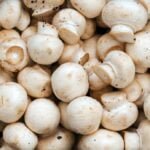were these substrate pasturized or sterlized
Title: Understanding Substrate Treatment: Pasteurized vs. Sterilized – Explained by a Mycology Expert
Introduction:
Substrates are a critical component in mushroom growth and development, providing essential nutrients and a suitable environment for mycelium to thrive. However, before introducing spores or mycelium, it is vital to treat the substrate properly. This comprehensive guide will delve into the differences between pasteurization and sterilization methods, focusing on heat treatment, sterilization techniques, and their importance in mushroom cultivation.
1. The Importance of Substrate Treatment:
1.1 What is Substrate Treatment?
Substrate treatment involves decontaminating and preparing the growing medium for mushroom cultivation. The main goal is to eliminate competing organisms, such as bacteria and molds, while retaining necessary nutrients for mushroom growth. This ensures optimal conditions for mycelium colonization and mushroom fruiting.
1.2 The Significance of Heat Treatment:
Heat treatment is crucial to ensure substrate purity and enhance mushroom growth. It helps eliminate unwanted organisms, reducing the risk of contamination. Pasteurization and sterilization are two common heat treatment methods employed in substrate treatment.
2. Pasteurized Substrates:
2.1 Understanding Pasteurization:
Pasteurization involves heating substrates at temperatures ranging from 75°C to 100°C for 4 to 10 hours. This method uses heat to eliminate or substantially reduce contaminating organisms. It is commonly used for substrates rich in organic matter, such as straw, sawdust, or wood chips.
2.2 Advantages of Pasteurization:
– Beneficial Microbial Balance: Pasteurization retains a balance of beneficial microorganisms that can suppress the growth of harmful contaminants.
– Cost-Effective: Pasteurization requires less energy and financial investment compared to sterilization processes.
– Natural Nutrient Preservation: This method preserves essential nutrients in the substrate, aiding mushroom growth and yield.
3. Sterilized Substrates:
3.1 The Concept of Sterilization:
Sterilization involves complete eradication of all living organisms in the substrate, including beneficial microbes. While specific sterilization methods are not explicitly mentioned, common techniques use heat, pressure, steam, or chemical agents.
3.2 Advantages of Sterilization:
– Maximum Contaminant Elimination: Sterilization ensures the highest level of decontamination, eliminating all competing organisms and reducing the risk of contamination during mushroom cultivation.
– Greater Flexibility: Sterilized substrates can be used for a broader range of mushroom species, as some are more sensitive to contamination than others.
– Extended Shelf Life: Sterilization eliminates almost all organisms, allowing substrates to be stored for longer periods without fear of contamination or spoilage.
4. Considering Specific Sterilization Methods:
4.1 Heat-Based Sterilization Techniques:
– Autoclaving: Pressurized steam at high temperatures ensures thorough sterilization by denaturing and destroying microbial cells.
– Dry Heat Sterilization: High temperatures in an oven or kiln degrade the cellular structure of microorganisms, resulting in their elimination.
4.2 Chemical Sterilization:
– Ethylene Oxide Treatment: Ethylene oxide gas, a powerful sterilizing agent, eradicates contaminants by disrupting their cellular functions in confined chambers.
– Hydrogen Peroxide Vapor: This method uses gaseous hydrogen peroxide to eliminate microbial life in a confined environment.
5. Choosing the Right Method:
The choice of treatment method depends on various factors, such as substrate type, mushroom species, available resources, and personal preferences. Mushroom cultivators often experiment with different methods to find the best approach for their specific needs.
Conclusion:
Proper substrate treatment is crucial for successful mushroom cultivation, ensuring optimal mycelium growth and bountiful mushroom yields. Both pasteurization and sterilization methods play significant roles in eliminating unwanted contaminants and providing a clean environment for mycelium colonization. Pasteurization retains beneficial microorganisms and essential nutrients, while sterilization completely eradicates all organisms. Understanding these substrate treatment techniques empowers cultivators to make informed decisions and achieve optimal results in their mushroom cultivation endeavors.




